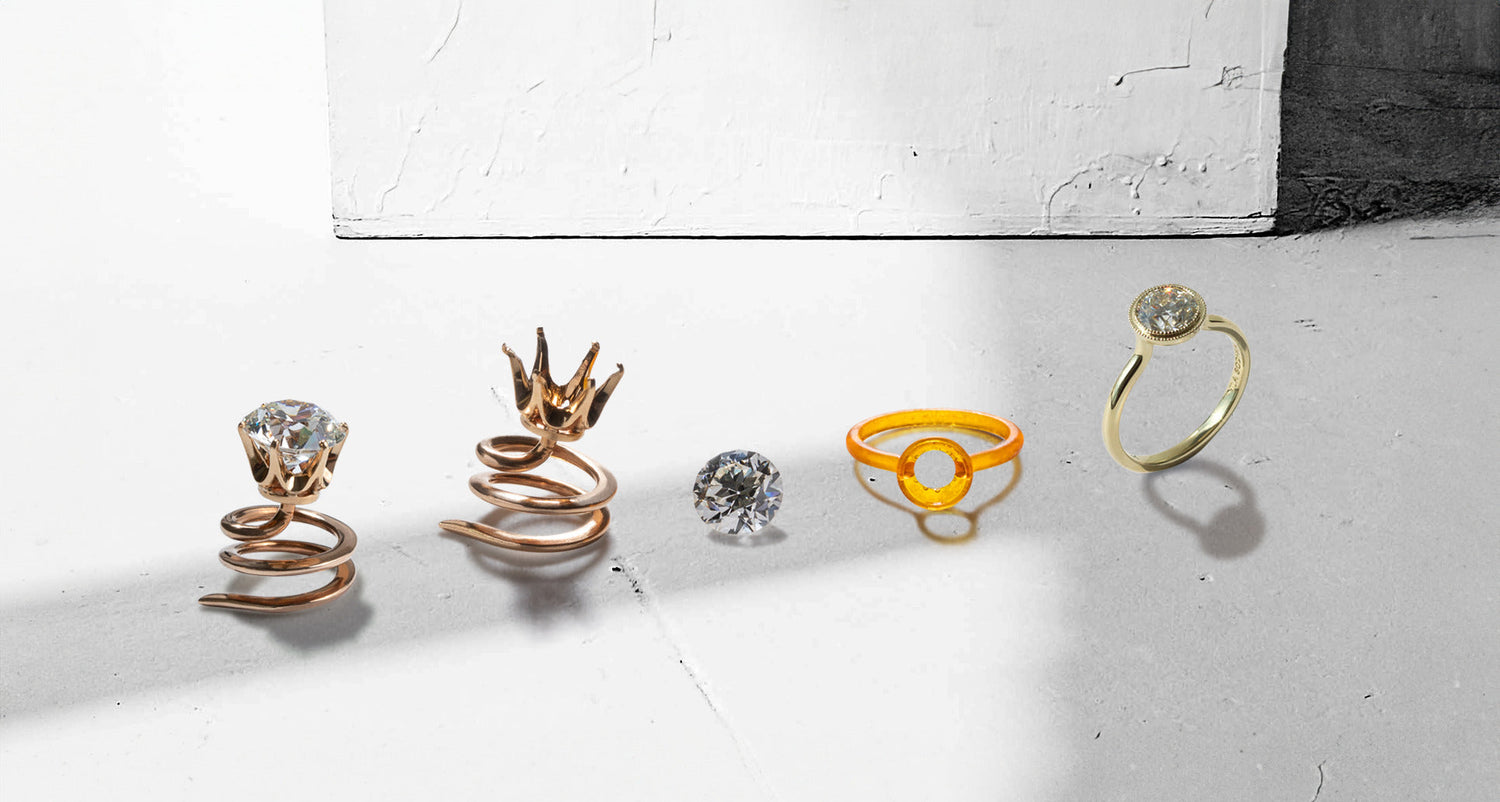With over 25 years of experience in sourcing and crafting exquisite pieces, I’ve seen firsthand how a diamond’s cut can make—or break—its brilliance. Many people assume that size or clarity is the most important factor in a diamond’s beauty, but let me tell you a little industry secret: if the cut isn’t right, none of that matters.
A poorly cut diamond can dull its sparkle, making even a high-carat stone look lifeless. On the other hand, a well-cut diamond—regardless of size—can outshine the rest with its fiery brilliance. And because my brand is built on selecting only the best-cut diamonds for my designs, I’m here to help you understand exactly why the cut is everything.
What is Diamond Cut, Really?
When we talk about a diamond’s cut, we’re not just talking about its shape (round, oval, princess, etc.). The cut refers to how well the diamond has been faceted, proportioned, and polished to maximize its ability to reflect light. A well-cut diamond will sparkle with unmatched brilliance, while a poorly cut one will look dull and lifeless—even if the other qualities (color, clarity, and carat) are excellent.
The Science of Sparkle: How Light Moves Through a Diamond
A diamond’s sparkle isn’t just magic (though it certainly feels like it!). It’s the result of precise angles, proportions, and symmetry that control how light enters and exits the stone. Here’s how it works:
-
Brilliance: The white light that reflects off the diamond’s facets and back to your eye.
-
Fire: The dispersion of light into its spectral colors (like a tiny rainbow inside your diamond).
-
Scintillation: The flashes of light you see when the diamond moves.
A well-cut diamond optimizes all three. A bad cut? It lets the light escape through the sides or bottom, reducing the sparkle and making the stone appear dull or glassy.
Good Cut vs. Bad Cut: The Difference is Crystal Clear
The Perfect Cut: Why It Matters
A high-quality cut ensures that light enters the diamond, bounces internally from facet to facet, and reflects back out through the top, creating that mesmerizing sparkle we all love. The proportions, depth, and symmetry must be precisely aligned to create this effect.
A well-cut diamond will:
-
Exhibit maximum brilliance, fire, and scintillation.
-
Look breathtaking in any lighting condition.
A Poorly Cut Diamond: Where Things Go Wrong
On the other hand, a poorly cut diamond can look lackluster, and its true beauty is lost. The most common mistakes include:
-
Too Deep: If a diamond is cut too deep, light escapes through the sides, making the stone appear dark and smaller than its actual carat weight.
-
Too Shallow: If a diamond is cut too shallow, light leaks out of the bottom instead of reflecting back to your eye, resulting in a dull, watery look.
-
Mismatched Proportions: If the facets are misaligned, the diamond won’t reflect light properly, reducing its brilliance.
Cut Grades: Decoding the GIA Standard
The Gemological Institute of America (GIA) grades diamond cuts from Excellent to Poor. Here’s what each grade means:
-
Excellent: The best of the best. Maximum brilliance, fire, and sparkle. Worth every penny.
-
Very Good: A close second, with slight variations in light performance but still a stunning choice.
-
Good: Decent sparkle, but some light loss occurs. Better than average but not top-tier.
-
Fair: Noticeable dullness. Avoid if you want brilliance.
-
Poor: No sparkle, no life—just don’t do it.
My philosophy as a designer? If it’s not Excellent or Very Good, it doesn’t make the cut (pun absolutely intended).
Why My Brand Prioritizes the Best-Cut Diamonds
I’ve spent years perfecting my sourcing process to ensure every diamond used in my designs meets the highest cut standards. Why? Because I believe a diamond should do more than just sit pretty—it should radiate light, energy, and strength, just like the person wearing it.
Here’s what sets my selection process apart:
-
Meticulous Sourcing: I handpick diamonds that meet strict cut criteria, prioritizing brilliance over carat weight.
-
Custom Cuts: In some cases, I work with master cutters to refine stones even further, enhancing their brilliance.
-
Transparency: Every diamond I offer comes with full certification and grading reports, so you know exactly what you’re getting.
How to Choose a Better Cut Diamond
If you’re shopping for a diamond, make sure you’re asking the right questions:
-
What is the cut grade? Always aim for Excellent or Very Good.
-
Does it have ideal proportions? Check the depth and table percentages for optimal light performance.
-
How does it look in different lighting? A good-cut diamond will sparkle even in dim light.
-
Am I prioritizing cut over carat? A smaller, well-cut diamond will outshine a larger, poorly cut one.
Final Thoughts: The Cut is Everything
When it comes to diamonds, beauty isn’t just skin deep—it’s in the cut. A well-cut diamond can elevate a piece of jewelry, creating a luminous effect that captivates everyone in the room. As a jewelry designer, I am passionate about sourcing only the best cuts because I want every piece I create to exude power, brilliance, and timeless elegance.
So next time you’re choosing a diamond, remember: size matters, clarity is nice, but the cut is everything. Choose wisely, and let your diamond shine as brightly as you do.





